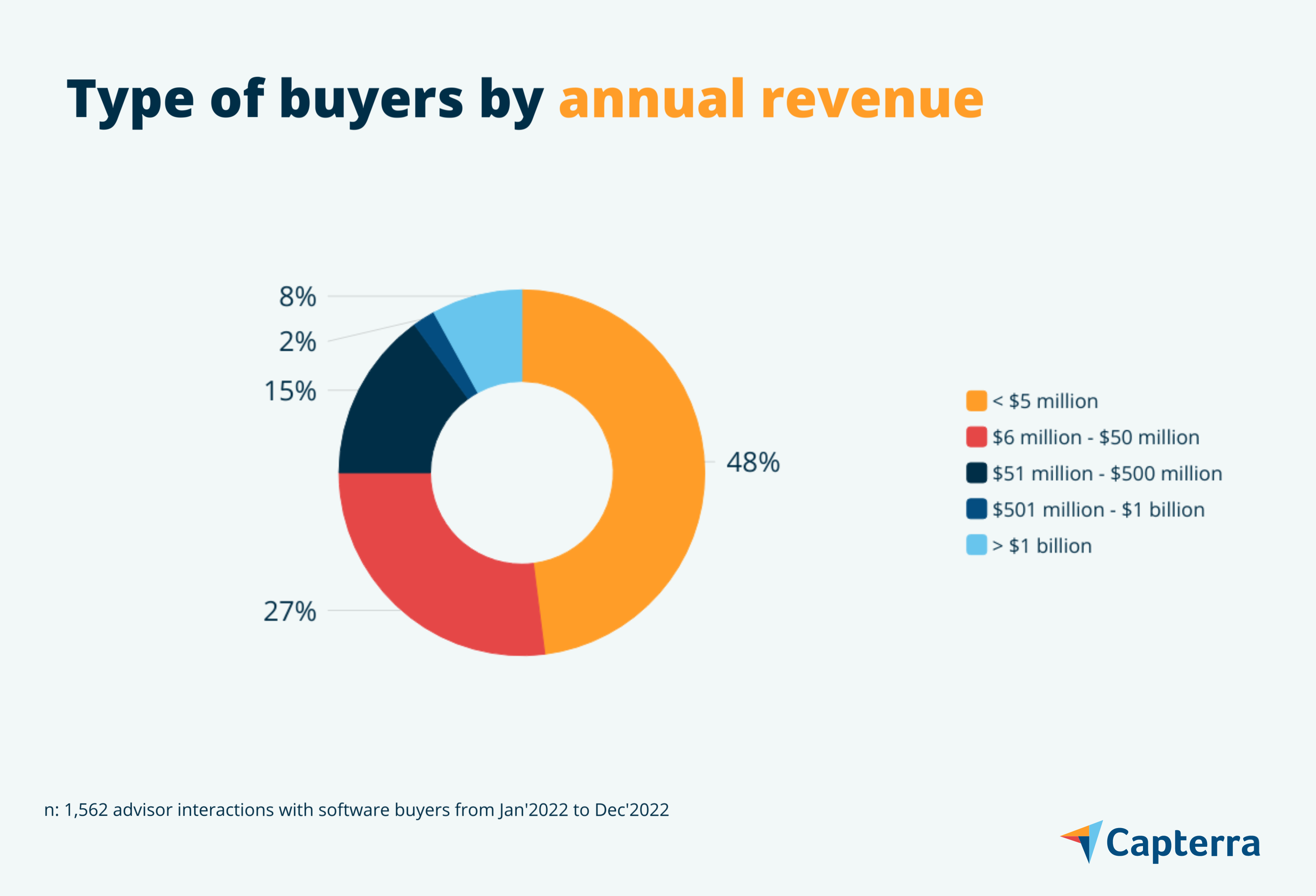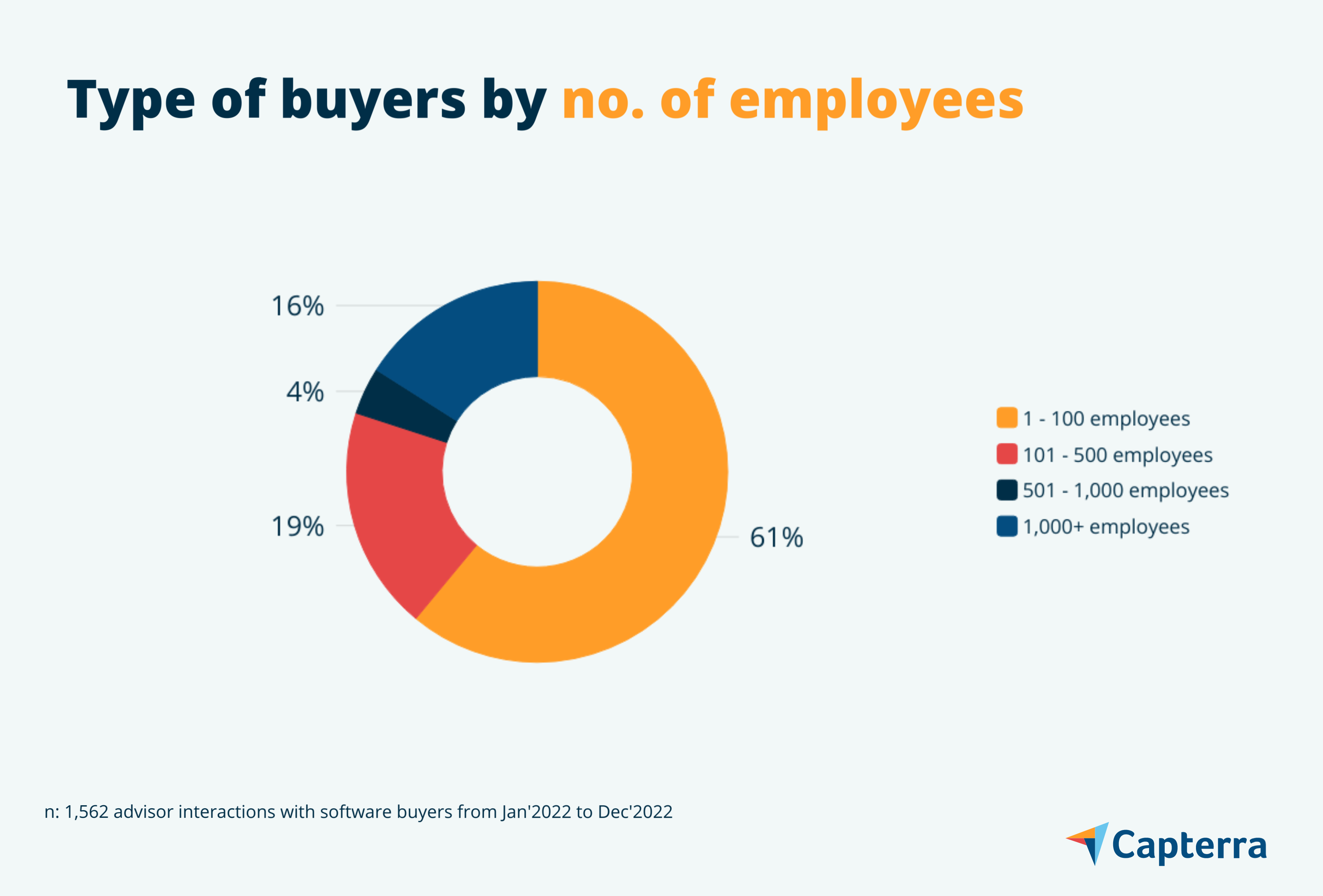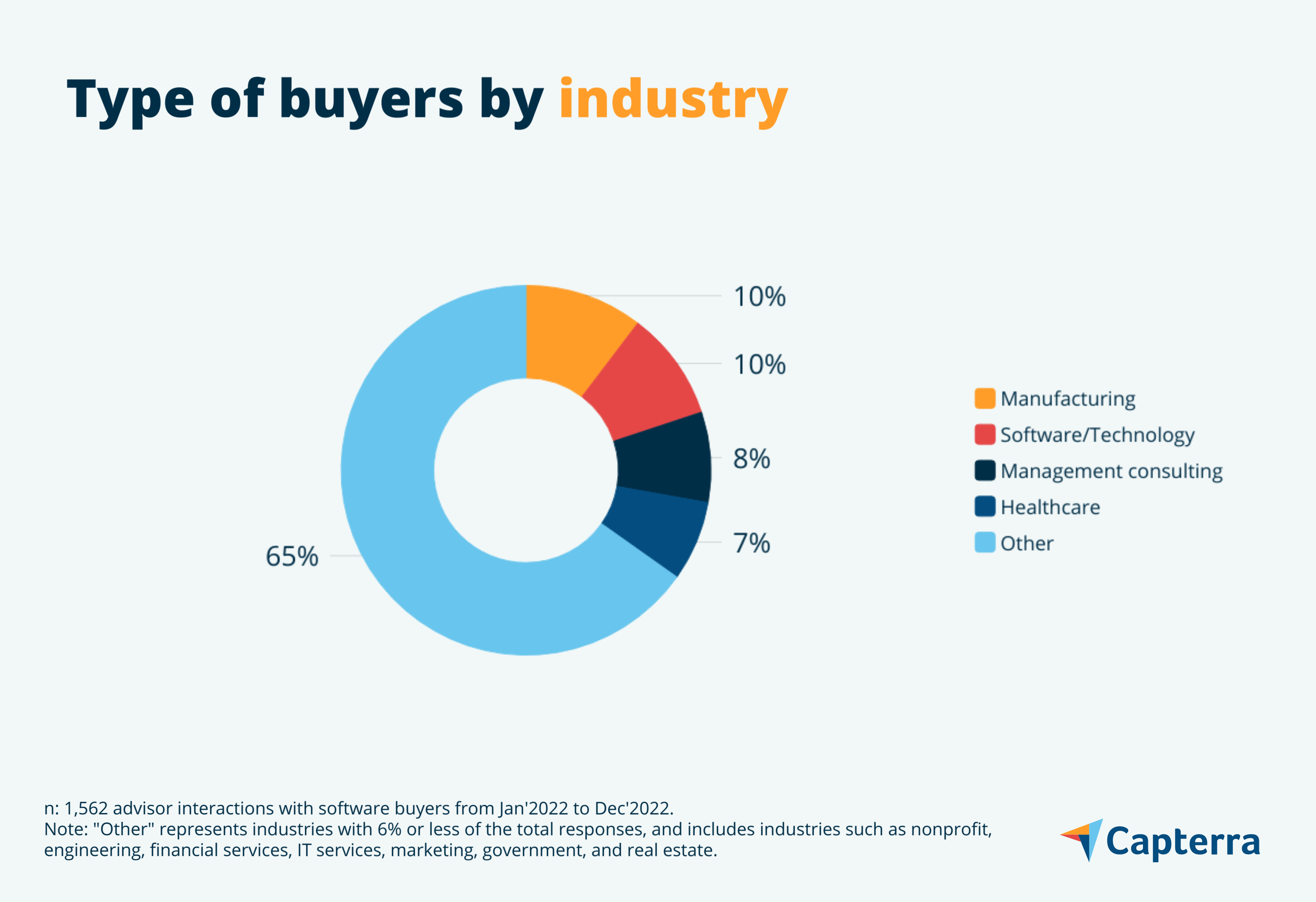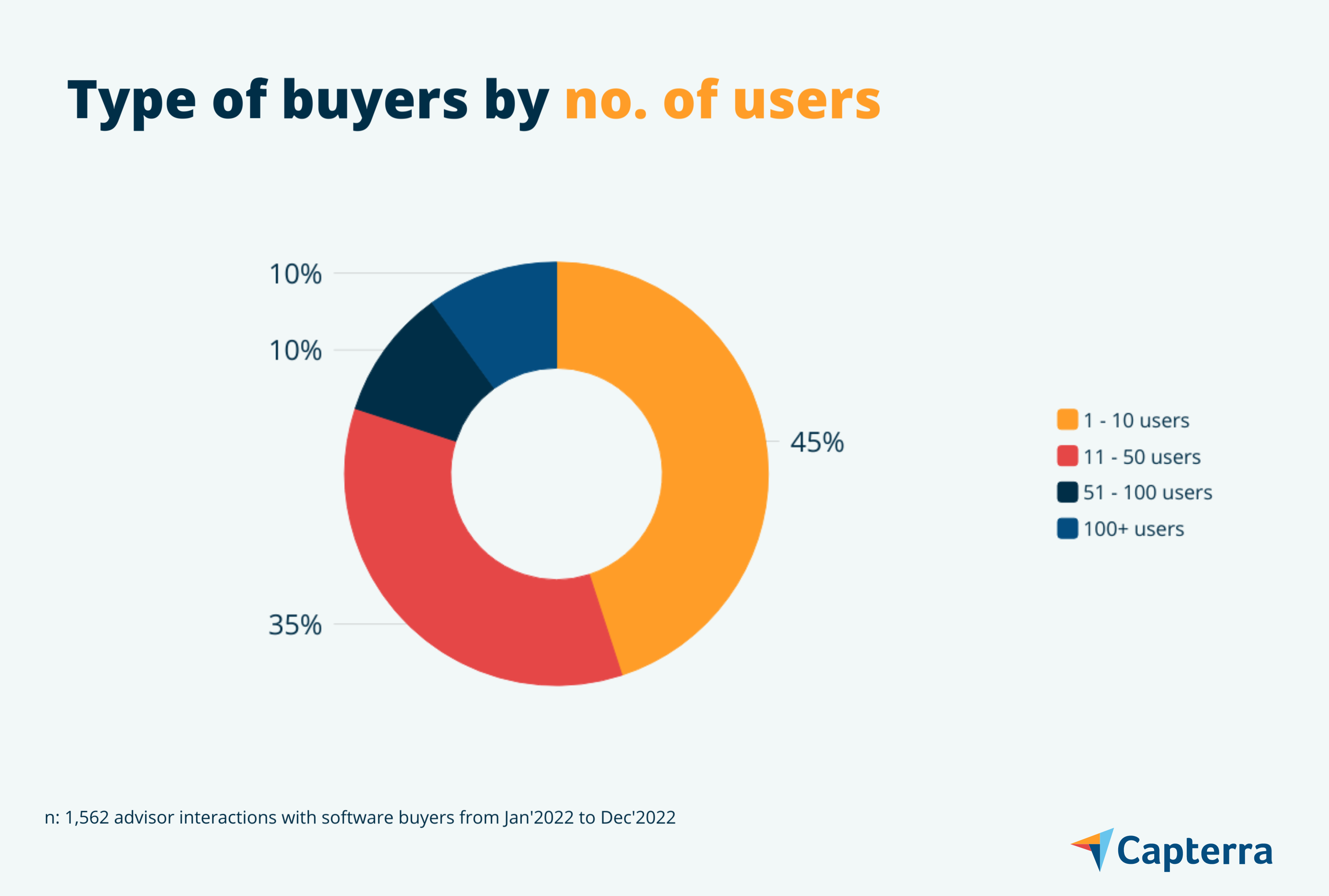Learn from your peers’ budgets, feature needs, and pain points to aid your project management software search.
Sixty-one percent of small and midsize businesses (SMBs) report buyer's remorse over a recent technology purchase, according to our 2023 SMB Tech Trends Survey*. Your business doesn’t have to be one of them.
Each year, Capterra’s software advisors speak with thousands of decision-makers evaluating new project management software for their business. We’ve mined those conversations for insights that you can learn from your peers’ budgets, feature needs, and pain points to aid your own software search.
/ Key insights
Software inefficiency, insufficient functionality, and usability issues are the top reasons buyers replace their existing project management software.
Many businesses rely on everyday office software such as Excel and Outlook to manage their projects, but they need a dedicated project management tool.
First-time buyers often request generic project management software features that prove less critical to teams actually using the software.
Buyers are likely to pay $30 to $70 per user, per month for a project management tool.
Failed project management software implementations point to three common pitfalls to avoid
According to our data, there are three main reasons businesses become so dissatisfied with their current project management software that they search for new software altogether: inefficiency (49%), lack of functionality (31%), and difficulty using the software (26%).
Each of these issues is likely related. One can easily draw a line from a tool lacking needed functionality to ultimately being labeled inefficient. For example, if your software doesn’t offer project status tracking, stakeholders may need to check for updates via email, straining your project team’s already busy day by adding more noise to everyone’s inbox.
Similarly, if a tool is hard to use, you might lose more time than the tool ultimately saves you by trying to understand functionality or developing shortcuts. This is why it’s critical to understand your specific use cases when searching for software and to research tools that aren’t just well-rated, but also attuned to your specific needs. For example, if you have large teams working on projects, status tracking and collaboration functionality will probably be a must. The bottom line is that a project management tool will only be as good as your understanding of your needs.
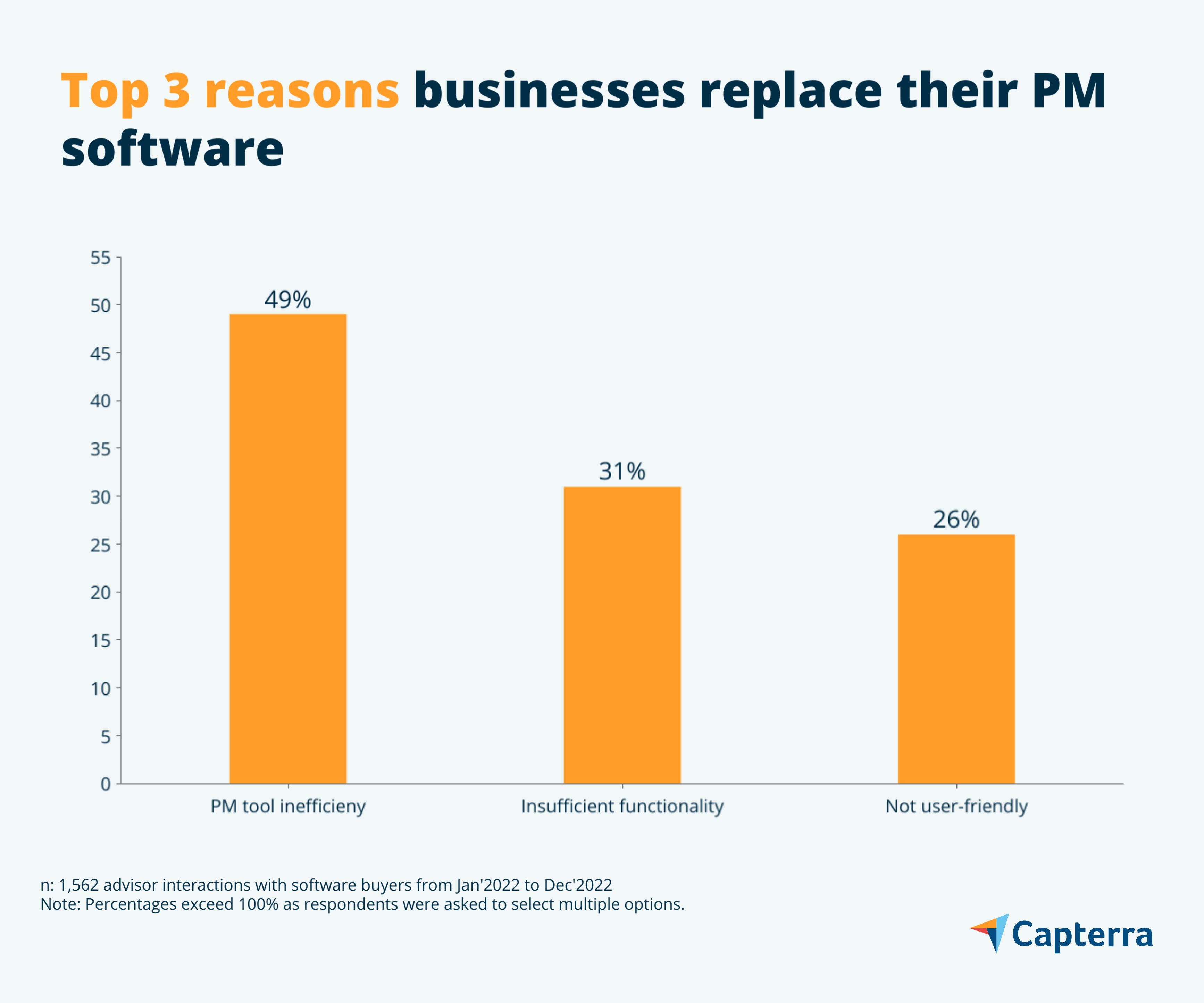
/ Pro tip
Gather requirements from team members who’ll use the software and then set up detailed demos with vendors to evaluate workflow efficiencies, functionality requirements, and user-friendliness to make sure there’s a match.
Many businesses seeking project management tools currently use everyday office software
Of the businesses that purchased a new project management tool, most (47%) previously used what we call “everyday office software”—general-purpose tools such as Excel, Outlook, or QuickBooks—to manage their projects, and it didn’t work for them. This should raise a red flag if you're wondering whether you can get away with managing your projects effectively via email, spreadsheets, or the same platform you use for other business tasks, such as billing your customers.
Our research indicates everyday office tools are more likely to lead to issues such as poor communication, unclear expectations, and even project cost overruns. When using email, for example, it’s easy to lose track of why a task or action gets delayed or when it’s expected to be completed. This creates fragmented communication and information gaps through which details can fall.
Purpose-built project management software, on the other hand, requires more upfront investment and time to implement, but it offers dedicated features such as a centralized platform for all project-related communications, which leads to better outcomes and happier teams.
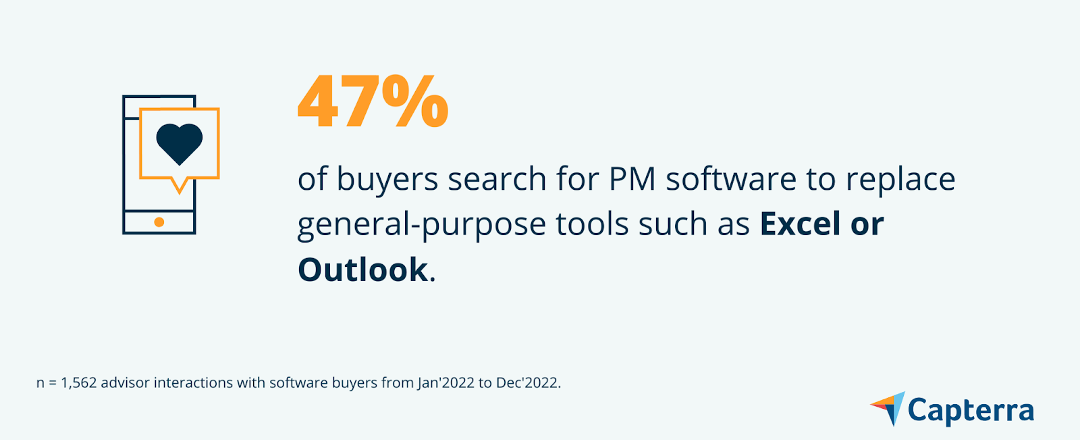
/ Pro tip
If you currently use everyday office software to manage projects, ask your team what their most common pain points are so you can address those in your software search.
Buyers seek collaboration features, but users rate scheduling as most critical
Businesses evaluating new project management software primarily prioritize collaboration, scheduling, and document management features. But are these the right features to focus on?
We looked at software reviews—Capterra has 65,000+ project management software reviews—to find out what actual project management software users found most critical in their daily work. It turns out that project management software buyers and project management software users don’t always agree. For instance, the most-requested feature from buyers is collaboration, whereas users rate project scheduling as the most critical.
The misalignment is greatest when it comes to time tracking, which only 21% of buyers seek but 37% of users say is critical. And when we look specifically at buyers replacing project management software (vs. those purchasing software for the first time), requests for time tracking functionality jump to 48%—suggesting that businesses who use project management software value time tracking more.
Businesses replacing project management software tend to have more specific needs, often driven by the limitations or frustrations they experience with their existing tool. They are more likely to focus on advanced features such as time tracking, resource management, and project scheduling.
This points to a need for shoppers to be specific with their feature requirements. Especially if you’re a first-time buyer, it’s easy to fall back on generic features such as collaboration as the focal point. Instead, provide the vendors you’re considering your use cases and goals, and look beyond vendors’ marketing jargons by asking demo reps to use real-world examples to explain the features they provide.

/ Pro tip
Your business is unique, so choose specific functionality your team needs. (There's disagreement in data as to what functionality is most critical for different businesses.) Make sure to list your business needs vs. simply naming the features. For example, rather than just “communication,” specify if you want the tool to integrate with your email or messaging platform, or if you want a live shared workspace for reviewing project docs and resources.
Typical buyer budget ranges from $30 to $70 per user, per month
While a team’s needs aren’t totally dependent on its size, it’s often the case that smaller teams have more basic requirements, while larger ones have more advanced needs. It makes sense, then, that the amount buyers tend to budget per user rises for bigger teams.
The chart below highlights the median buyer budget per user, per month for increasing team sizes.

These budgets roughly align with the pricing our research team sees in the marketplace. Software prices largely depend on the features and number of user seats needed. The most common pricing model is a subscription-based monthly or annual fee, often based on the number of users.
Entry-level plans typically cover limited functionality such as collaboration, and their pricing might start below $10 per user, per month. Mid-tier plans typically cover everything an entry-level plan offers, plus advanced functionality such as time tracking and project scheduling. Their prices (per user, per month) tend to start in the double digits and go all the way into the thousands. Finally, high-end plans include additional premium features such as managing unlimited projects and workflow automation, and their per user, per month prices range from the low $200s to the $4,000s.
/ Pro tip
If you’re cost-conscious, check out our pricing and cost comparison guide to find software that fits your budget while best meeting your project-specific feature requirements.
More resources for your software search
Whether you’re looking to buy new project management software or replace your existing tool, here are some additional resources to aid your software search:
Start with our interactive project management software directory to compare hundreds of products, filter your search by specific features, and read comprehensive reviews from SMB leaders.
Check out top-rated project management software based on user ratings and popularity in Capterra Shortlist.
Dive into our list of top-rated free project management tools to try a free option before making a purchase.
Read our software implementation tips to maximize your chances of success.
Review our project management software pricing guide to compare tools with the highest value-for-money and functionality ratings.
Buyer demographics
The buyers we interacted with are largely small businesses representing a growing majority of project management software purchases. Below you’ll find the demographics of the buyers so you can see the size and type of businesses, from annual revenue to industry.
